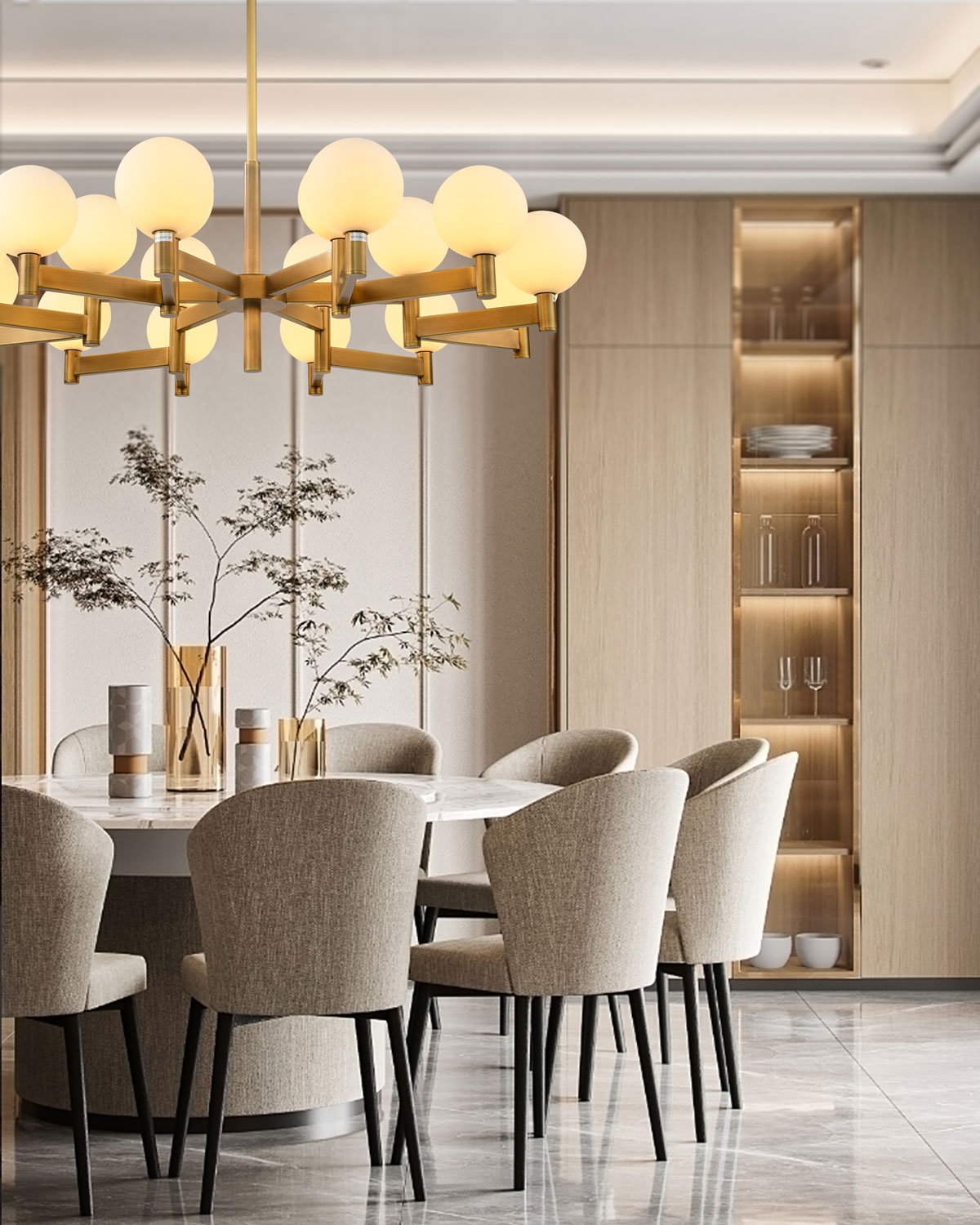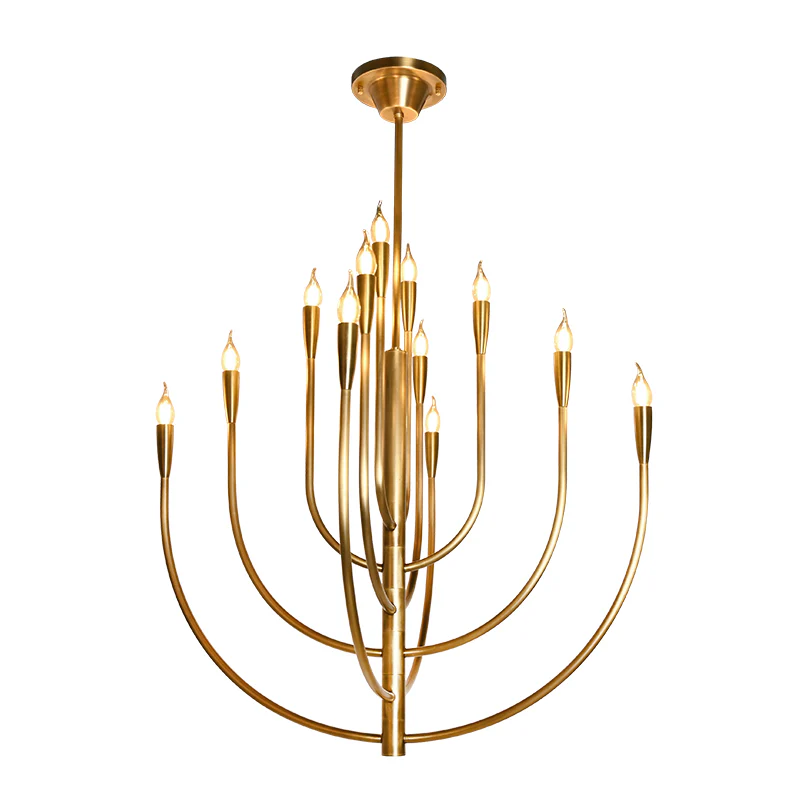The Ultimate Guide to Lighting: Illuminate Your Space Effectively
The Ultimate Guide to Lighting: Illuminate Your Space Effectively
Understanding the Importance of Lighting in Interior Design
Lighting plays a crucial role in shaping the ambiance and functionality of any space. Whether you are designing a cozy living room, a productive office, or a tranquil bedroom, the right lighting can make all the difference. In this comprehensive guide, we will explore various lighting options, techniques, and tips to help you create beautifully lit spaces that enhance your lifestyle.
Types of Lighting
Lighting can be categorized into three main types: ambient, task, and accent lighting. Understanding these types is essential for designing an effective lighting plan.
| Type | Description | Ideal Usage |
| Ambient Lighting | This is the general illumination of a room, providing a comfortable level of brightness without glare. | Used throughout a space to ensure adequate lighting for movement and general activities. |
| Task Lighting | This type of lighting focuses on specific areas where tasks are performed, providing sufficient light for detailed work. | Ideal for reading, cooking, or any activity requiring focused visibility. |
| Accent Lighting | Accent lighting is used to highlight specific features, such as artwork or architectural details. | Perfect for creating focal points and adding visual interest to a room. |
The Science of Lighting: Color Temperature and Brightness
When choosing lighting, it’s important to consider color temperature and brightness, which are measured in lumens. Color temperature, expressed in Kelvin (K), affects the mood of a space. Here’s a quick guide:
| Color Temperature | Kelvin Range | Atmosphere |
| Warm White | 2700K - 3000K | Creates a cozy and inviting atmosphere; perfect for living areas. |
| Neutral White | 3500K - 4100K | Provides a balance between warm and cool; suitable for kitchens and workspaces. |
| Cool White | 5000K - 6000K | Imparts a bright and modern feel; ideal for offices and retail spaces. |
Choosing the Right Fixtures
The type of fixtures you choose can significantly influence the effectiveness of your lighting. Here are some popular options:
- Pendant Lights: Great for dining areas and kitchens, providing focused lighting while adding aesthetic appeal.
- chandeliers: An elegant option for dining rooms or entryways, offering both ambient and accent lighting.
- Recessed Lighting: Ideal for a clean look, recessed lights can be used for ambient or task lighting, depending on their placement.
- Floor lamps and Table lamps: Flexible options for both ambient and task lighting, perfect for living rooms and bedrooms.
Smart Lighting Solutions
With the advent of smart home technology, lighting has become increasingly customizable. Smart bulbs allow users to change the brightness and color temperature through an app or voice commands. Here are some benefits of smart lighting:
- Energy Efficiency: Smart bulbs typically consume less energy than traditional incandescent bulbs.
- Convenience: Schedule your lights to turn on or off at specific times, enhancing security and energy savings.
- Customization: Experiment with different colors and brightness levels to match your mood or occasion.

Lighting Considerations for Different Spaces
Living Room
The living room is often the heart of the home, where family and friends gather. For this space, it’s essential to create a warm and welcoming atmosphere. Combine different types of lighting: ambient for overall illumination, task lighting for reading areas, and accent lighting to highlight artwork or architectural features.
Kitchen
In the kitchen, proper lighting is crucial for both functionality and safety. Task lighting over countertops and islands is essential for food preparation, while ambient lighting can set the mood for family gatherings. Consider installing under-cabinet lights to enhance visibility.
Bedroom
The bedroom should be a tranquil sanctuary. Use soft, warm lighting for ambient illumination and consider bedside lamps for reading. Dimmer switches can also provide flexibility in creating the desired level of comfort.
Office
A well-lit office boosts productivity and reduces eye strain. Utilize bright, cool white lighting for task areas, ensuring that your workspace is well-illuminated. Incorporating natural light through windows can also enhance energy and focus.
Maintaining Your Lighting
Proper maintenance of your lighting fixtures ensures their longevity and effectiveness. Regularly clean fixtures to remove dust and debris, replace burnt-out bulbs promptly, and check wiring and connections for safety. Additionally, consider upgrading to LED bulbs for longer lifespan and energy efficiency.
Common Questions About Lighting
What is the best color temperature for various rooms?
The ideal color temperature varies by room: warm white (2700K - 3000K) is suitable for living rooms and bedrooms, neutral white (3500K - 4100K) works well in kitchens, and cool white (5000K - 6000K) is effective in offices.
How can I improve the lighting in a small space?
To enhance lighting in small spaces, opt for Mirrors to reflect light, use lighter color palettes, and incorporate multifunctional fixtures that provide ambient and task lighting.
Are smart lights worth the investment?
Smart lights offer energy savings, convenience, and customization, making them a valuable investment for tech-savvy homeowners or those looking to enhance their living environment.
Conclusion
Lighting is an art and science, essential for creating spaces that are not only functional but also aesthetically pleasing. By understanding the different types of lighting, choosing the right fixtures, and employing smart lighting solutions, you can transform any space into a well-lit haven. Remember to consider color temperature and brightness alongside your personal style and the specific needs of each room. The right lighting can truly illuminate your space and enhance your quality of life.
For effective lighting design, take your time in planning and don't hesitate to experiment. After all, the right light can change everything!
